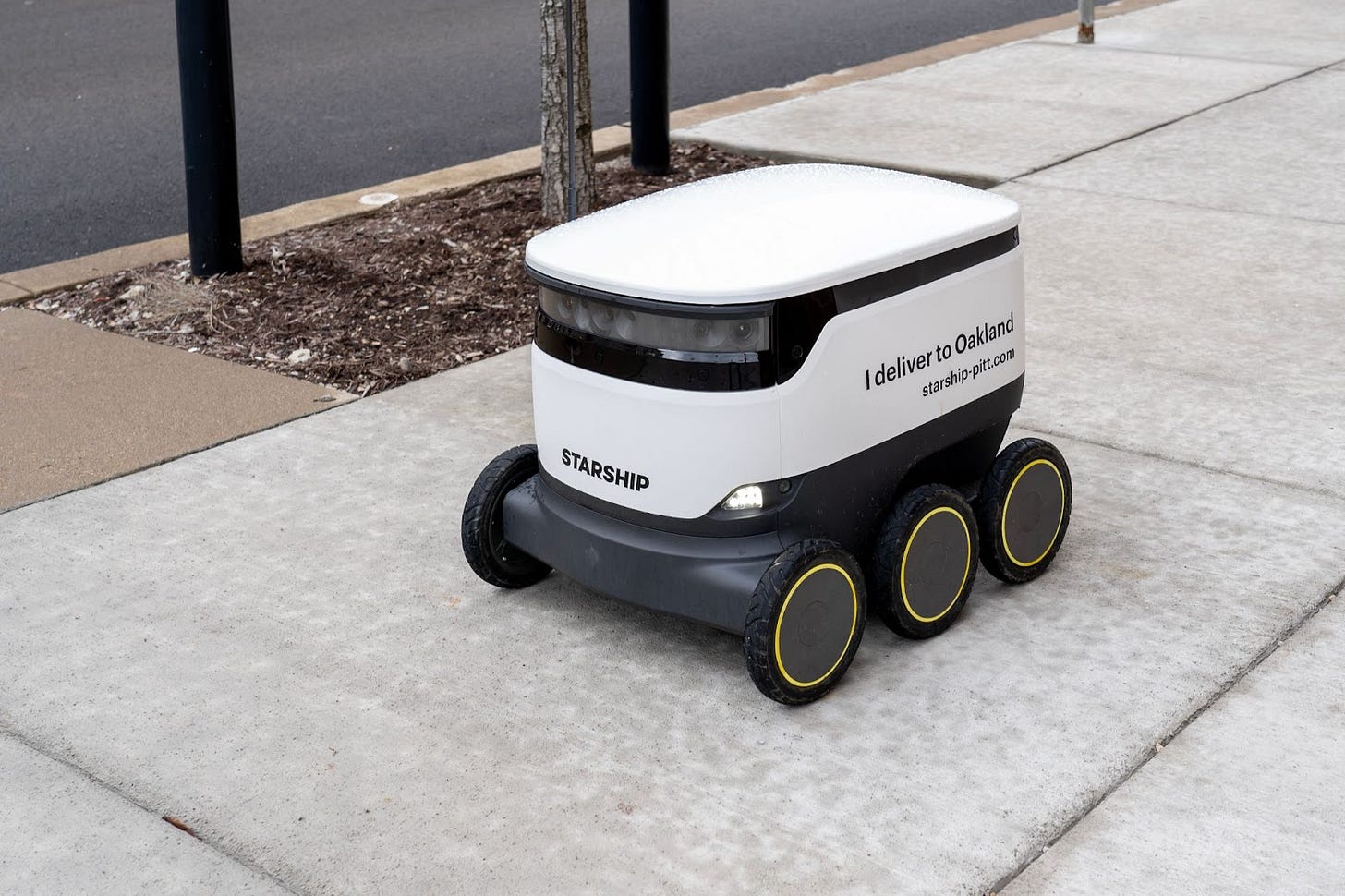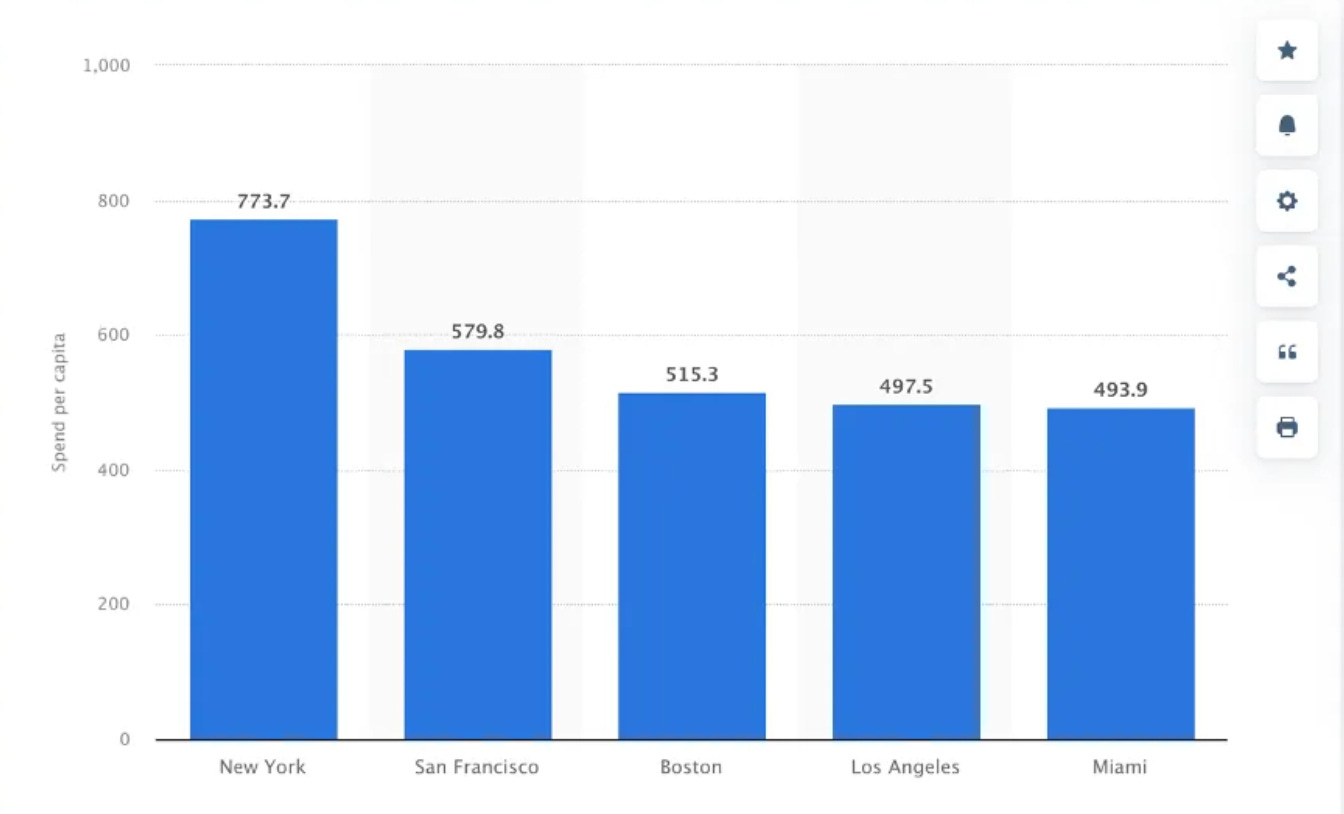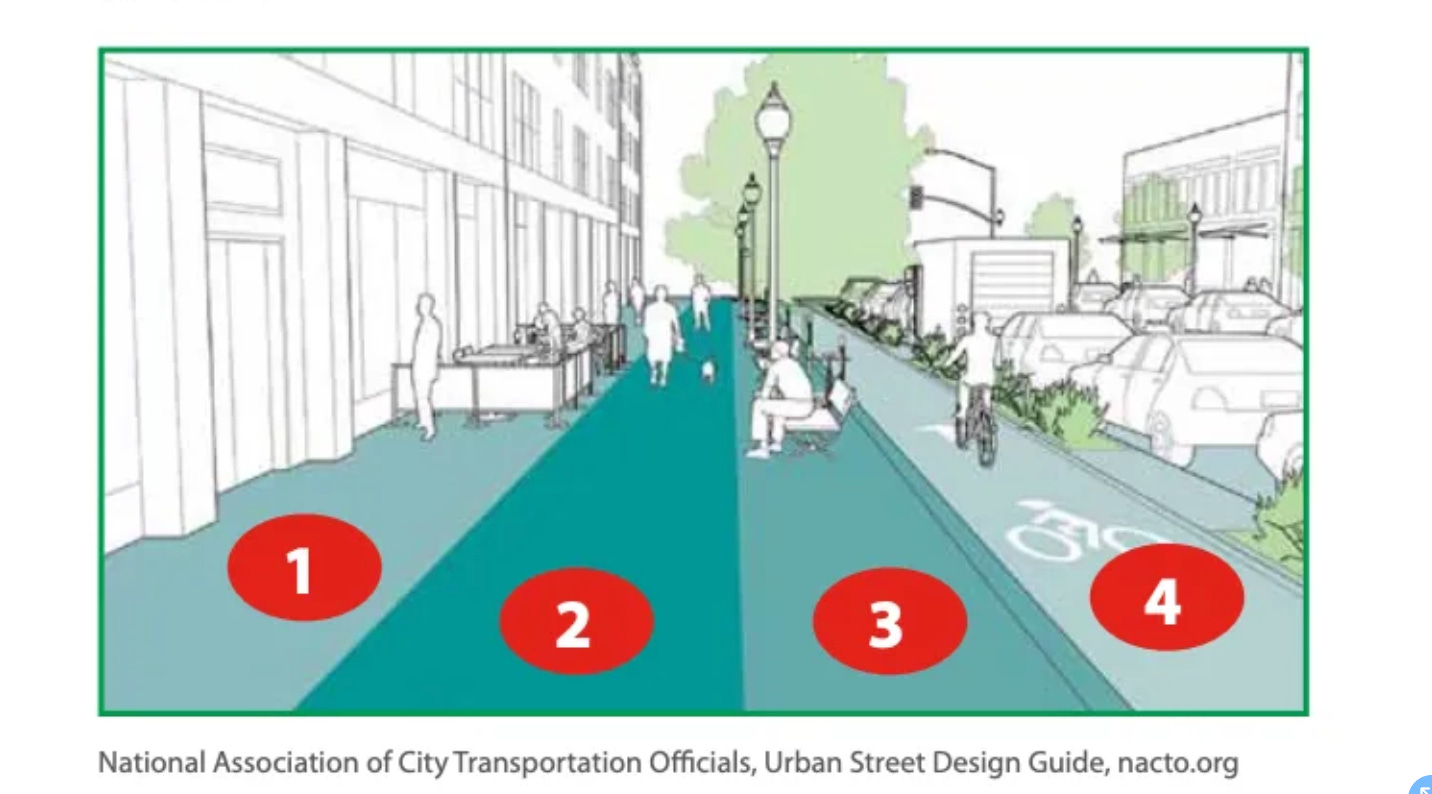We all want fast delivery … food, groceries, products...
We also don’t want to pay heavily for it...
We dislike the fact that the platforms we use to offer us these on-demand services are usually gig economy firms that underpay their workers (you know, VC money dries up at some point)...
And finally, we also dislike the fact that the gig economy drivers are usually reckless and dangerous since they are trying to deliver our meals, groceries, and packages as fast as possible.
In this highly conflicting situation, the solution is delivery robots.
But these come with their own set of problems.
These delivery robots are clearly not new and have been piloted on a very small scale. I have written about Nuro and Dominos before, but again, that was very small scale and only starts to scratch the surface.
Several news pieces from the past few weeks highlight what will come next in the intersection of the on-demand economy, logistics, and, … you know, people (or urban life).
First, from Tel Aviv.
Since 2021, Russian-owned firm Yandex has been running a pilot program in Tel Aviv, Yandex Rover, with the intention of replacing human couriers with small autonomous vehicles.
In recent months, the pilot was expanded, enabling customers living in the center of Tel Aviv to order groceries through its Yango Deli home delivery service, and have them delivered by the small Yango robots. However, the expansion of the service didn’t go unnoticed by Tel Aviv’s residents, who started complaining about the impact of having to share the sidewalks with these pesky robots:
In particular, this Tweet became viral.
And for the non-Hebrew readers:
“The dystopia index in Tel Aviv is rising. Have you noticed these Yango robots that are blocking the sidewalk? Basically – the city decided it’s not enough that pedestrians must flee from electric scooters and bikes, and approved a pilot program by Yango for a robot delivery service. In the picture, I am being forced into the street with the stroller for the third time this week,”
The municipality of Tel Aviv responded by saying:
“Mapping of the city streets as part of Yango’s robot delivery pilot is done by the Transportation Ministry, contingent upon the approval of the Tel Aviv-Jaffa municipality. As of now, the municipality has halted this activity in order to examine their operation and suitability to the city’s infrastructure.”
In general, Tel Aviv is a very walkable city.
Everything is close, most errands can be done on foot, and there are sidewalks everywhere. It’s a great city and has the potential to become a pedestrian’s heaven.
But it lacks enforcement regarding parking rules (many cars park on sidewalks), scooters and electric bikes also use the sidewalks to zoom by, so walking becomes harder, particularly if you have a stroller, or have limited mobility, or use a wheelchair. It’s also a very congested city, so having these robots use the roads would also be very disruptive.
The city was not designed for these usages (it also lacks reasonable public transportation and parking), so pedestrians now have to share their sidewalks with these robots, among other things.
The question is also pertinent when it comes to self-driving cars (and I have discussed this before): Shall we redesign our cities to allow for a more convenient yet modern life, where we can co-exist with these robots (broadly defined)?
What do I mean by redesign or co-existence:
Hans Rosling claims that the washing machine was the most important invention of the industrial revolution since it enabled women to join the workforce. Similarly, the dishwasher is important in saving water and energy at home.
But we don’t expect the washing machine or the dishwasher to load themselves. We don’t expect the dishes or laundry to be collected by the appliance. We do most of the work for them, so they can focus on what they do well.
We also don’t give them our house's most prominent real estate. We relegate them to places where they are less visible and less disruptive. But I am sure it took homes quite some time to allow for that space. In many apartments in NY, you are still not allowed to place either of these appliances without permission.
We may need to redesign our cities and urban environment to allow space for self-driving cars and self-driving delivery robots. For example, we know that self-driving cars have a hard time dealing with the unpredictable behavior of human drivers and pedestrians. The same goes for these self-driving delivery robots.
But a viable solution requires long-term planning and a budget (both of which we lack in 2022).
The Underground Solution
Here is an example of how it can be done.
The Swiss parliament recently passed a legal framework enabling underground freight transportation. The Cargo Sous Terrain (CST) project is a plan for underground cargo tubes full of automated delivery carts transporting goods between cities and logistics centers across Switzerland at 30km/h (approximately 19mph). The idea behind the CST is to provide for long-term freight transport without relying on the expansion of road and rail networks.
CST is estimated to cost between $30 and $35 billion for a 500-kilometer network, as seen below:
The solution is more about connecting cities rather than the last-mile delivery in the city, but it highlights something important: we want more stuff, but we realize that the existing infrastructure was never designed to accommodate our growing needs. But building new infrastructure is difficult and disruptive, so we prefer to just overcrowd our current infrastructure.
Robots and Cities
Back to our city robots.
Some of the firms operating these robots are already trying to preempt these issues:
Sure, because all I am missing from my urban experience, on top of the air pollution and the honking all day, is a loudspeaker alerting me about a robot passing by.
But this highlights one of the main issues in discussions on the gig economy, the last-mile deliveries, and the on-demand economy: They are actually creating greater polarization.
Those who like to use these services tend to be younger, wealthier, and more mobile. In contrast, those who are negatively affected are older, less wealthy, less healthy, and less mobile. In other words, the on-demand economy is making cities less liveable for the more vulnerable groups.
I am not an urban design expert, but it’s clear that some cities are more walkable than others. One would assume that in these cities, on-demand services would not be so popular since one can walk and buy groceries, or walk to a restaurant and get take-out rather than rely on delivery. But I think reality shows us that this is not the case.
In fact, many of the most walkable cities are also where the on-demand economy thrives.
For example, statistics on the cities that spend money per capita on food delivery include:
Similarly, the most walkable cities are:
The cities with the highest walkability are also the cities with the highest food delivery activity, at least in the US. But this is not a causal argument. I am not saying that because cities are more walkable, food delivery is more popular, but people that like to live in urban places also value convenience, which means that sometimes they just want to stay in and order food even though they could just walk to the nearest restaurant and get it. On the other hand, there is some causality since apartments (hence kitchens) are smaller, which makes it harder to cook, and since eating at the same restaurant can be boring and eating out can be a hassle, ordering in is a pleasant alternative.
Furthermore, people like living in communities that offer sidewalks. The AARP writes:
“Eight in 10 Americans prefer being in a community that offers sidewalks and good places to walk. Six in 10 prefer a neighborhood that features a mix of houses, shops and services within an easy walk versus a neighborhood that requires a car for every errand.”
Also in terms of walkability:
“Urban planners in major cities around the world have been rethinking how we travel and many believe walkability should play a fundamental role. Amsterdam, Copenhagen, Helsinki, Zurich, and Hamburg are all walking towards a future in which their streets have more people and fewer cars.”
These cities have much better planning and already realize that even pedestrians and cyclists don’t get along that well:
“In Zurich, 34 percent of trips are made on foot or by bike. Delivering efficient, integrated, multimodal mobility that allows people to get almost anywhere without a car has been one of the hallmark achievements of the city. Plans to strengthen active transport began in 1996 with the so-called History Commitment. The document established that no new parking spaces could be built in the city unless they replaced old ones—limiting the use of cars in urban areas. Since then, building parking lots has taken place mostly underground, as ground-level space has been designated for creating parks, public spaces, and pedestrian-exclusive areas.”
It’s not surprising to see Zurich on the list of the most advanced cities, and it’s not surprising that it has begun its city planning since 1966, and this is what we have to start thinking about. So how should it look like:
The recommendation is to have a safe and adequate space for walking that is buffered by faster mobility options such as bicycles and scooters. I am sure some will disagree, but delivery robots are much better suited to deal with cyclists than with pedestrians. Or maybe we need to create another lane for all delivery services, autonomous or not, at the expense of road space for cars.
But as with the washing machine (I am sure that the first generations who used appliances were criticized for how spoiled they were), which over time became a necessity and has since been normalized, I think delivery services will eventually become an indispensable part of our everyday lives. But even though we can’t live without appliances, we still create a designated space and don’t sacrifice important living spaces in order to have them in our homes. I think it will be the same for any self or non self-driving last mile solutions.










re/ underground last-mile delivery: check out Pipedream Labs https://i.pipedreamlabs.co/